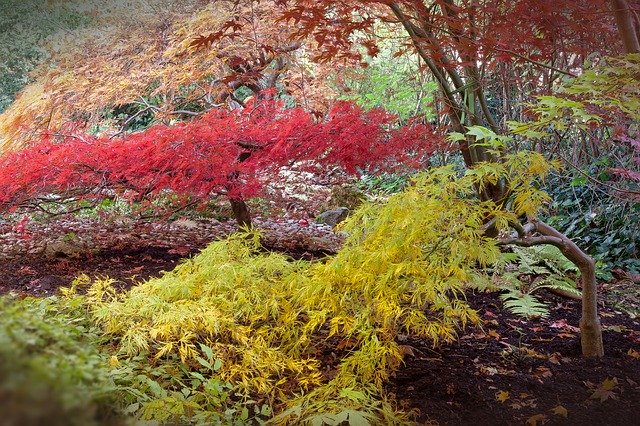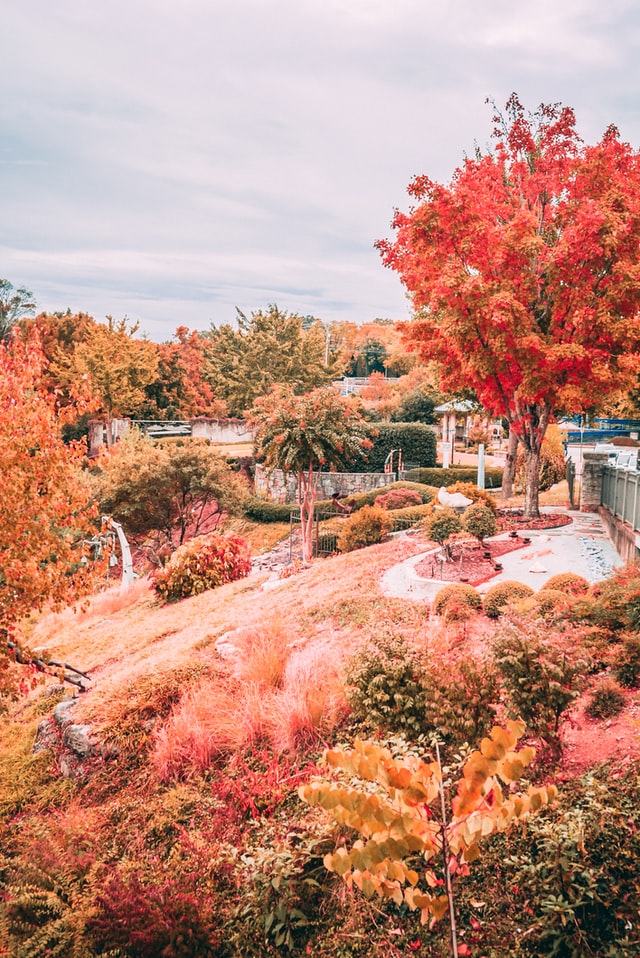This excerpt has been extracted from “Landscape Planning Practical Techniques for The Home Gardener” by “Judith Adam”. Ten Best Trees to create filtered shade is a tree whose primary role is to provide shade in the surrounding environment due to its spreading canopy and crown. More details on this service can be derived from “Tree Removal Berkeley CA“. Thanks to the author for this wonderful piece of information on our Nature.
Best Trees to create filtered shade
Trees with finely shaped and cut foliage create filtered shade conditions, moderating the light and air temperature below without casting a dense, dark shadow. A healthy lawn can be maintained underneath, particularly if it is made from shade grass seed or shade sod, both of which can be purchased from garden centers.
Any of these trees will cast soft, dappled light over a planting of sun-shy perennial plants, such as host as and spring-blooming hellebore’s. A grouping of these makes a sheltered glade around a patio seating area.
Trees with smaller foliage make good lawn specimen because their fallen leaves won’t damage the grass or require repeated raking.
Japanese Maple Acer palmatum h 18 ft (5.5 m)-20 0 F (-290 C) Upright forms of red and green Japanese maple from loose canopies as they mature. Many species and hybrids exist, and the deepest purple leaf cultivar is ‘ Blood good’. Be sure to purchase an upright tall form and not a lace-leaf cascading shrub.

Fern-leaf Beech Fagus sylvatica ‘ Asplenifolia’ h 30 ft (9 m) -300 F (-340 C) This beautiful tree is a bit of an oddity, so unlike its beech cousins, but is very effective as a light-filtering specimen plant. Deeply incised leaves give a distinct ferny effect, and turn nutty brown in autumn. Its youthful structure is quite tight with branching down to the ground, opening with age into a graceful, spreading form.
Downy Service berry Amelanchier arbor-ea H 20 ft(6 m) -300 F(-340 C) whether sold as a shrub or single trunk, it’s all the same plant and the shrub will grow as high as the tree. Its white early spring flowers turn to blue berries favored by birds. The small leaves make a soft, dappled light in summer and turn orange-to –red in autumn. Many hybrid cultivars of this native plant exist, including ‘Ballerina’, ‘Princess Diana’ and ‘Robin Hill’.
‘Imperial’ Honey Locust Gleditsia triacanthos var. inermis ‘ Imperial’ H 30 ft( 9 m) -300 F (-340 C) Favored as a street tree for its no-raking autumn leaf drop, honey locust is a graceful, spreading plant with symmetrically arranged branches in a compact form. Foliage breaks bud late in spring, opening into dainty green leaves. Cultivars, in various heights, include ‘Summer gold’ and ‘Sunburst’, with golden leaves on new growth turning to chartreuse.
Himayan Birch Betula jacquemontii H 25 ft (7.6 m) -200 F (-290 C) Whitest of all the birches, Himalayan birch has shown some resistance to the bronze birch borer when grown in a consistently moist soil. The chalk-white exfoliating bark and glossy green foliage make this tree sparkle in sunlight. The height of birch trees and the fluttering mannerism of their leaves create beautiful dappled shade.
Kentucky Coffee Tree Gymnocladus dioica H 40 ft (12 m) -400 F (-400 C) Despite its name, this tree is well adapted to northern regions. Best known for interesting re-curving bark and a picturesque winter profile, it is also valued for scented greenish-white flower panicles and ferny foliage. It prefers a moist rich soil, but with age tolerates drought and city conditions. A good choice to filter light over a seating area on a hot lawn or patio.
Pagoda Dogwood Cornus alternifolia h 15 ft (4.6 m) -300 F (-340 C) .A graceful native dogwood with deeply veined leaves, open form and horizontal tiered branching, this produces creamy blossom heads in spring followed by blue-black berries. It grows best in moist soil and can be used as an under-story tree in partial shade. When grown in sun and adequately watered, autumn foliage turns reddish purple.
Tatarian Maple Acer tataricum H 20 ft (6 m) W 15 ft (4.6 m) -400 F (-400 C ) A slow-growing maple with upright, oval form and small, medium green leaves. Spring flowers are panicles of greenish white color, turning to small red winged fruits in late summer. Tatarian maple’s autumn color is a molted yellow to red, except on the cultivar ‘Rub-rum’, which turns blood red. This maple is highly adaptable to cold, dry climates and worth seeking out.

Russian Olive Elaeagnus angustifolia H 18 ft (5.5 m) – 500 F (-460 C) Russian olive is one of the few trees that will make strong growth in dry or sandy soil. It prefers an open, sunny position and is salt-tolerant, making it a good choice near a roadway or salt water. The gray-green foliage is a valuable ornamental s asset and will filter the light on a hot corner over perennial beds.
‘Ivory Silk ‘Tree Lilac Syringa reticulate ‘Ivory Silk’ h 20 ft(6 m) -400 F (-400 C ) This is a hybrid cultivar of Japanese tree lilac and the last of all the lilacs to bloom, with large creamy white panicles and privet-like scent. It has a formal shape with a single standard trunk and an oval crown. It is a good choice to moderate light over parked cars or a hot patio. Try also ‘Summer Snow’, ‘Regent’ and ‘Chantilly Lace’.
Continue reading our next article on Choosing Trees
